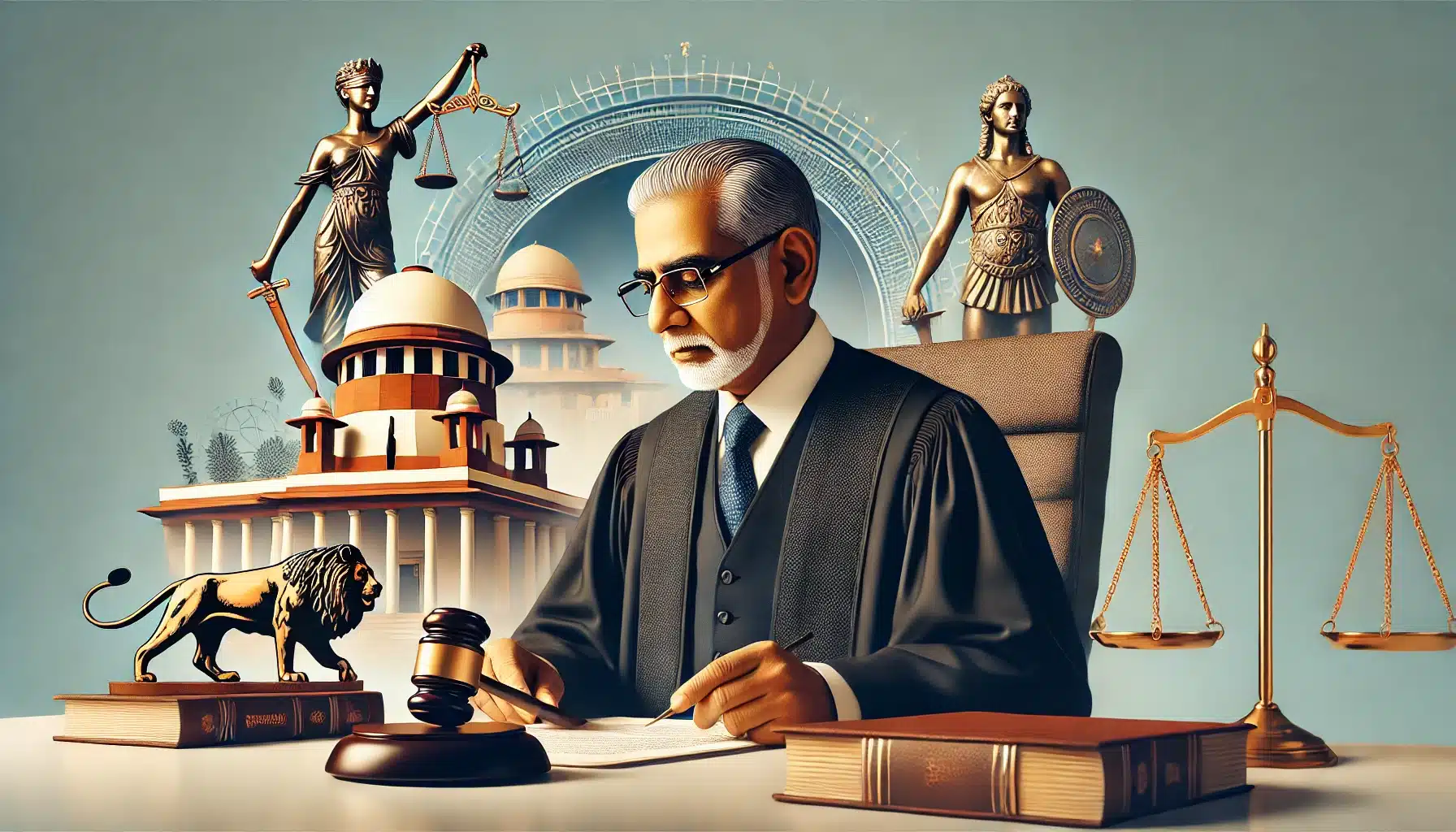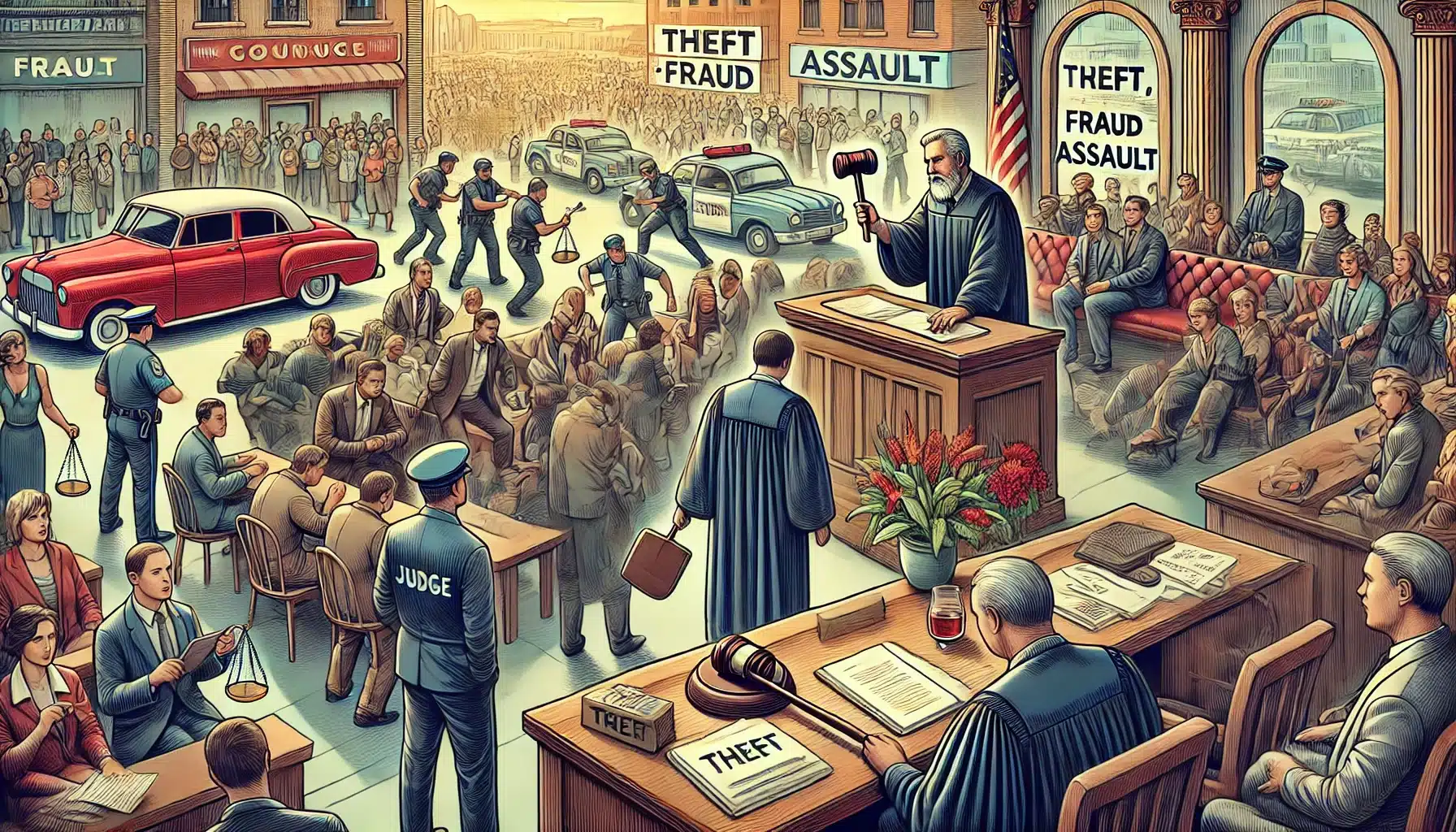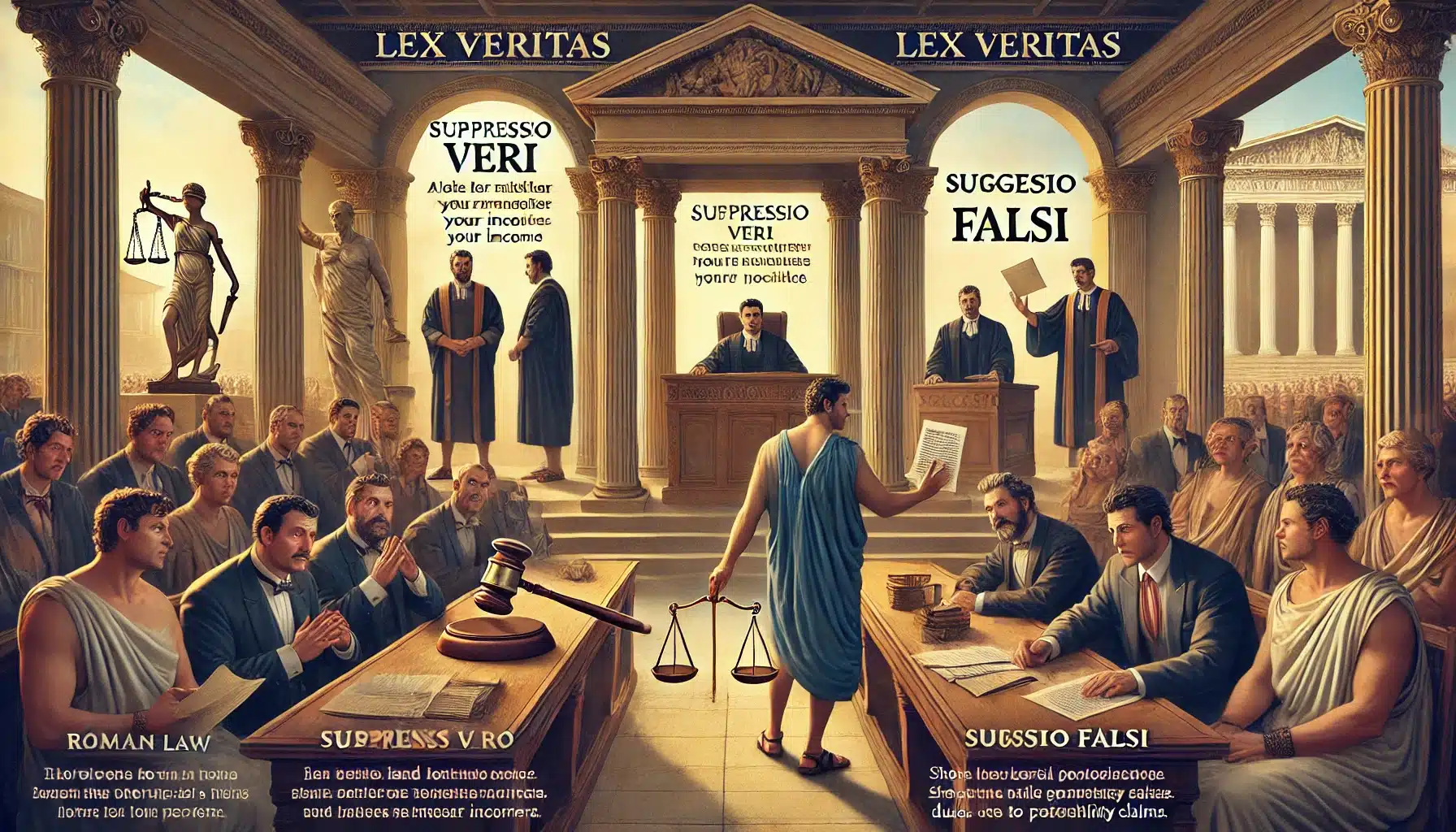Jul 23, 2024 15:52 UTC
| Updated:
Jul 23, 2024 at 15:52 UTC
Furnishing False Evidence under Indian Penal Code / Bhartiya Nyaya Sanhita
Introduction
● Evidence refers to the materials or assertions that are admissible in the court to support certain belief or providing relevant fact during the course of judicial proceedings of a case, section 3 of Indian Penal Code enlists oral and documentary evidence.
● If the credibility of such evidence is hampered by any means through fabrication , employment of illegal means , making statements claims that are untrue in nature or suspected to be untrue for the purpose of altering the decisions of the court and to deviate it from the truth or reality , it is termed as false evidenced.
● Chapter XI of the Indian Penal Code 1860, titled false evidence and offenses against public justice contains provisions regarding this concept and since false evidence is inadmissible in the court this chapter also prescribes the punishment to those who give or fabricate false evidence under its provisions.
● According to the recent development the previous statute (Indian Penal Code) is replaced by a new one titled Bhartiya Nyaya Sanhita (BNS), largely the crux and content of the sections remain the same but the structure of arrangement has altered.
Legal Framework for false evidence
Chapter XI of the Indian statue titled Indian Penal Code contains provisions regarding false evidence from section 191 to 195 A all of these sections are discussed in detail below ;
Act of giving false evidence
● Section 191 defines the act of giving a false evidence as when an individual makes a statement under the conditions of being bound by oath or the provision of law and such statement is false in nature which either the individual knows to be false or suspects to be untrue.
● Corresponding provision in BSS – Chapter XIV Section 227
● The two important factors of this provision are firstly the intent to deliberately mislead the court and secondly giving false evidence under oath which undermines the integrity of the judicial process and hampers the administration of justice.
● Such a statement can be expressed in words that is made verbally or otherwise through other means such as written etc. For illustration , if A and B have an ongoing trial , C being a friend of A appears in the court and claims that he was with A when the crime of being committed when in fact it is untrue is thereby said to be giving false evidence.
● In the case of Sushil Kumar v. State of Haryana[1], Sushil Kumar, the appellant, was convicted by the trial court and the conviction was upheld by the High Court.
The primary accusation was that Sushil Kumar had given false evidence under oath during judicial proceedings.
The Supreme Court upheld the conviction of Sushil Kumar as the court analyzed the evidence and concluded that the appellant had indeed made false statements under oath with the intent to deceive the court.
Act of fabricating false evidence
● Section 192 defines fabricating false evidence as the act of an individual when he/she causes a circumstance to exist, make any false entry in any book or record, or make any document containing a false statement, with the intent to cause any public servant or any other person to form an erroneous opinion on a point material to the result of the proceeding.
● Corresponding provision in BSS – Chapter XIV section 228
● The fabrication may contain forging of electronic records as well by making false entries. The essential element to hold a person liable under this section is the commission of fabrication by the individual and that fabricated evidence being used in a judicial proceeding or in front of any other authority such as an arbitrator or a public servant.
● This provision demonstrates the judiciary’s zero-tolerance policy towards actions that undermine the judicial process and its commitment to upholding the integrity of the legal system. For instance if A puts jewels into a box belonging to Z, with the intention that they may be found in that box, and that this circumstance may cause Z to be convicted of theft then A has fabricated false evidence.
● In the case of Emperor v. Muhammad Ishaq[2], Muhammad Ishaq was accused of fabricating false evidence, the specific allegation was that Ishaq had forged a document to mislead the court in a judicial proceeding.
This document was created to establish false circumstances with the intention of affecting the outcome of the case.
The Allahabad High Court found Muhammad Ishaq guilty under Section 192 IPC. The court thoroughly examined the evidence and concluded that Ishaq had intentionally fabricated the document to mislead the judicial proceedings.
Punishment against the act of giving and fabricating false evidence
● Section 193 prescribes punishment to those who are liable for giving false evidence and fabricating false evidence under the above mentioned section 191 and 192 respectively.
● Corresponding provision in BSS – chapter XIV section 229
● Accordingly it lays down if the false evidence is given or fabricated in a judicial proceeding, the punishment can be imprisonment of either description for a term which may extend to seven years, and the offender shall also be liable to a fine.
● In a different scenario if the false evidence is given or fabricated in any other case, the punishment can be imprisonment of either description for a term which may extend to three years, and the offender shall also be liable to a fine.
● In the case of Kanwal Tanuj v. State of Bihar[3], In this case, the appellant was accused of fabricating false evidence in a land dispute case. The false evidence was intended to mislead the court and influence the outcome of the judicial proceeding.
● The Patna High Court found Kanwal Tanuj guilty under Section 193 IPC, stating that the fabrication of false evidence was clearly established. The court underscored the significance of maintaining the integrity of judicial proceedings and imposed a stringent punishment to serve as a deterrent.
● The most important factor to establish while imposing a punishment prescribed under this section is the mens rea or the intention of the accused if it is not sufficiently proven the individual is relieved from the consequences as it can be seen in the case of Dr. S.L. Goswami v. High Court of Madhya Pradesh[4], Dr. S.L. Goswami was accused of giving false evidence during the judicial proceedings of a criminal case.
The false evidence was allegedly given to protect another person from legal consequences The Supreme Court emphasized that for a conviction under Section 193 IPC, it is crucial to prove that the false evidence was given intentionally.
The court acquitted Dr. S.L. Goswami, stating that the prosecution failed to establish the requisite mens rea (intention) beyond a reasonable doubt.
Aggravated outcomes resulting due to false evidence
● The sections 194 – 195 A determine the aggravated conditions or outcomes due to false evidence being presented in the court and determine punishments in respective scenarios.
● Corresponding provisions in BSS- section 230 to 232 respectively
● Section 194 provides for the act of giving or fabricating false evidence with the intent to procure capital punishment against another and prescribes such person who is held liable under this section with imprisonment for life, or with rigorous imprisonment for a term which may extend to ten years, and shall also be liable to fine.
● In addition to that if an innocent person is convicted as a result of giving or fabrication of false evidence then, the person who gives such false evidence shall be punished either with death or the punishment hereinbefore described in the IPC.
● Section 195 provides for the act of giving or fabricating false evidence with the intent to procure imprisonment for life or for a term of seven years or above against the other and lays down such a person who gives or fabricates false evidence, shall be punished as a person convicted of that offense would be liable to be punished.
● Section 195 A deals with the offense of threatening someone to give false evidence and makes an individual liable of that act to be punished with imprisonment of either description for a term which may extend to seven years, or with fine, or with both.
● Moreover if an innocent person is convicted as a result of false evidence due to the imposed threat then, the person who threatens shall be punished with the same punishment and sentence in the same manner and to the same extent such innocent person is punished and sentenced.
● In Rajesh Kumar v. State[5], Rajesh Kumar was accused of threatening a witness to give false evidence in a criminal trial. The threats included potential harm to the witness’s reputation and property.
The aim of these threats was to manipulate the witness into providing false testimony that would benefit Rajesh Kumar in the ongoing legal proceedings. The court meticulously examined the evidence and the circumstances under which the threats were made and found him guilty under Section 195A IPC.
Acts punishable with similar punishments
- Sections 196-199 of the Indian Penal Code lay down certain acts that are punishable in similar manner as the act of giving or fabricating false evidence.
- Corresponding provisions in BSS – section 233 to 236 respectively
- Section 196 penalizes the use of false evidence regardless of whether the proceeding results in a favorable or unfavorable outcome and prescribes the punishment as imprisonment of either description for a term which may extend to seven years, and a fine.
- Section 197 deals with the issuance or signing of a false certificate. It states that whoever issues or signs any certificate required by law, knowing or believing that such a certificate is false in any material point, shall be punished with imprisonment and/or fine
- Section 198 concerns using a certificate known to be false. It states that whoever uses or attempts to use as true any certificate, knowing the same to be false in any material point, shall be punished in the same manner as if he had issued or signed the false certificate thereby ensuring credibility of documents.
- Section 199 addresses false statements made in declarations that are by law receivable as evidence. It states that whoever, in any declaration made or subscribed by him, which declaration any court of justice or any public servant is bound or authorized by law to receive as evidence of any fact, makes any statement which is false, and which he either knows or believes to be false or does not believe to be true, shall be punished with imprisonment and/or fine.
Conclusion
The evidence that is presented in the case must be just and accurate by all means as it considerably affects the ultimate outcome or the decision of the case. The concept of false evidence in IPC demonstrates the judiciary’s zero-tolerance policy towards actions that seek to manipulate legal outcomes through improper means and contaminate the evidence as if it happens it corrupts the delivery of justice. Sections 191 to 193 of the IPC play a vital role in safeguarding the judicial process from deceit and falsehood. They establish strict penalties for those who attempt to pervert the course of justice by giving or fabricating false evidence, thus upholding the principle of truth in legal proceedings. While sections 194 to 195A IPC deal with severe offenses related to the manipulation of evidence and coercion in the judicial process. The Indian judiciary has consistently taken a firm stance against such actions, recognizing their potential to subvert justice and cause harm to innocent individuals. The highlighted case laws demonstrate the courts’ commitment to upholding the integrity of the legal system and ensuring that justice is based on truthful and uncoerced evidence.
[1] AIR 1981 SC 1204.
[2] AIR 1916 All 120.
[3] 2014 (2) BLJ 695.
[4] 1979 AIR 437.
[5] (2009) 4 SCC 44.
































